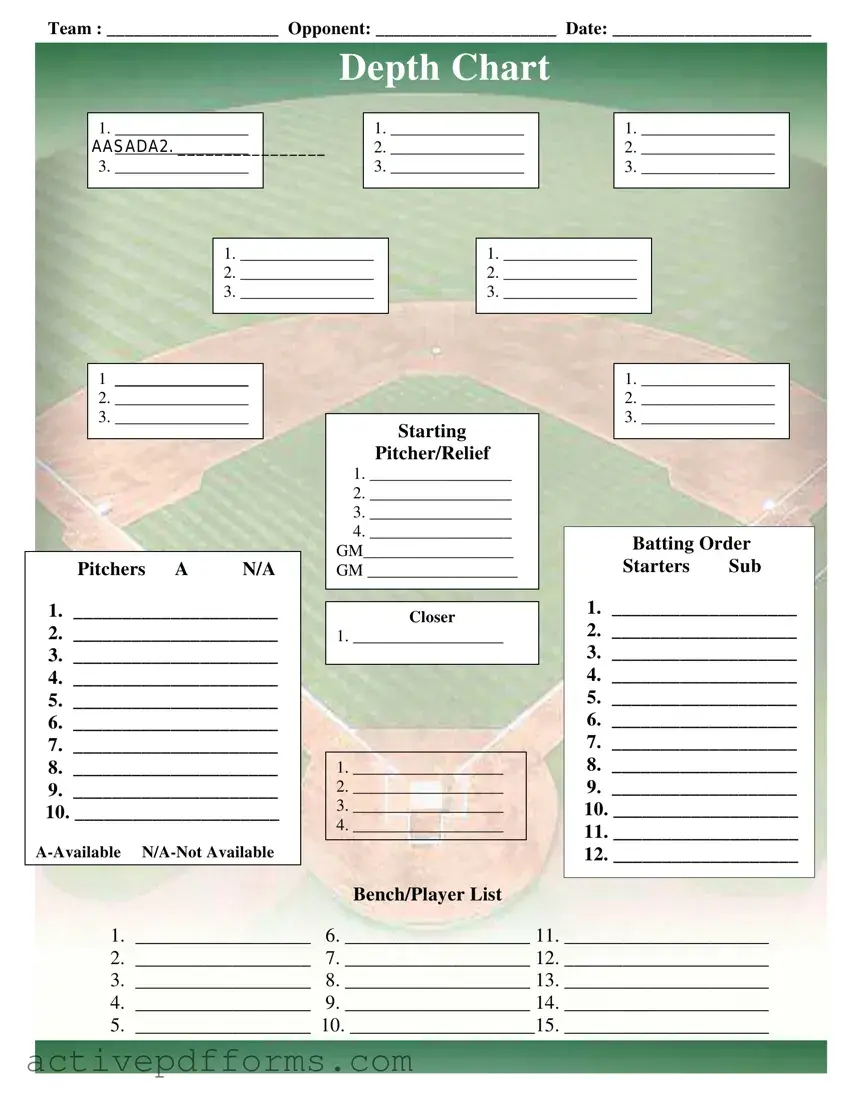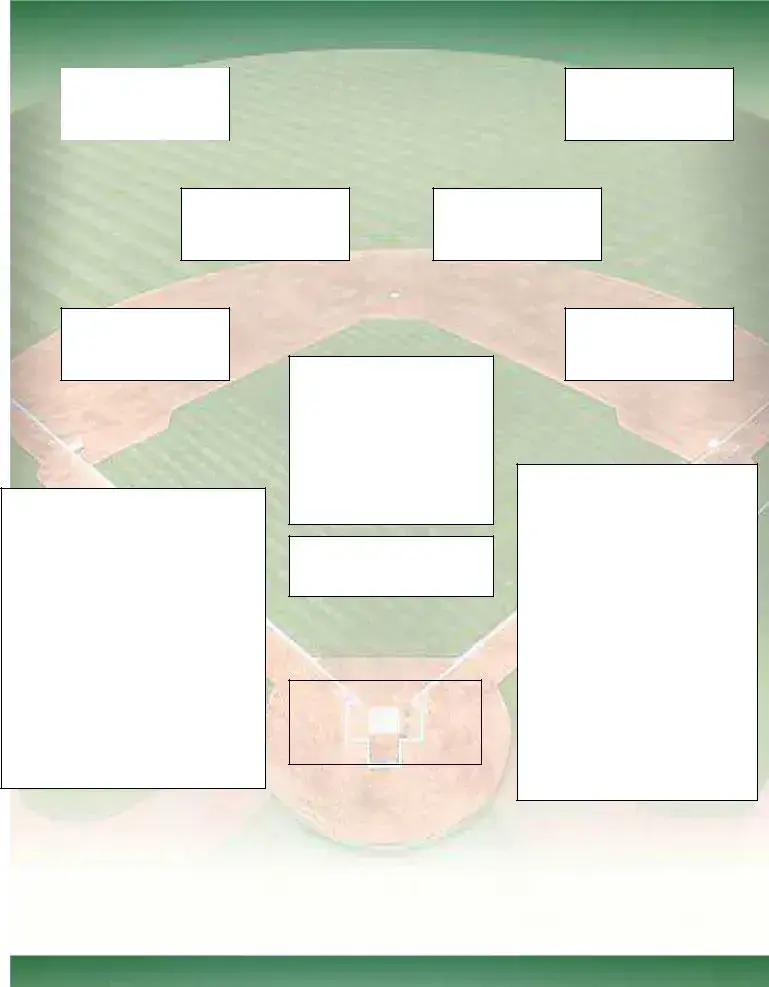Every baseball game begins with the strategic groundwork laid out on a Baseball Field Lineup form, a crucial blueprint that lists the playing team, the opponent, and the game date to set the stage for the encounter ahead. This document meticulously details players' positions, starting from the batting order to the depth chart, which outlines positions for first to third players in a series of lineups. The form delineates not only the names of potential pitchers, distinguishing between those available and not available, but also specifies roles such as the starting pitcher, relief, and closer to ensure clarity in player roles and game strategy. Additionally, it identifies a general manager (GM) for the team, emphasizing the administrative oversight required. The batting order section further allocates spots for starting players and substitutes, indicating a well-thought-out plan for on-field and off-field strategies. Moreover, a bench or player list is provided to encompass the entire squad, including those not in the starting lineup, ensuring every team member's role is identified, whether they start the game or are designated as potential substitutes. This comprehensive form serves as a linchpin for game preparation, coordinating team efforts and strategies seamlessly.

